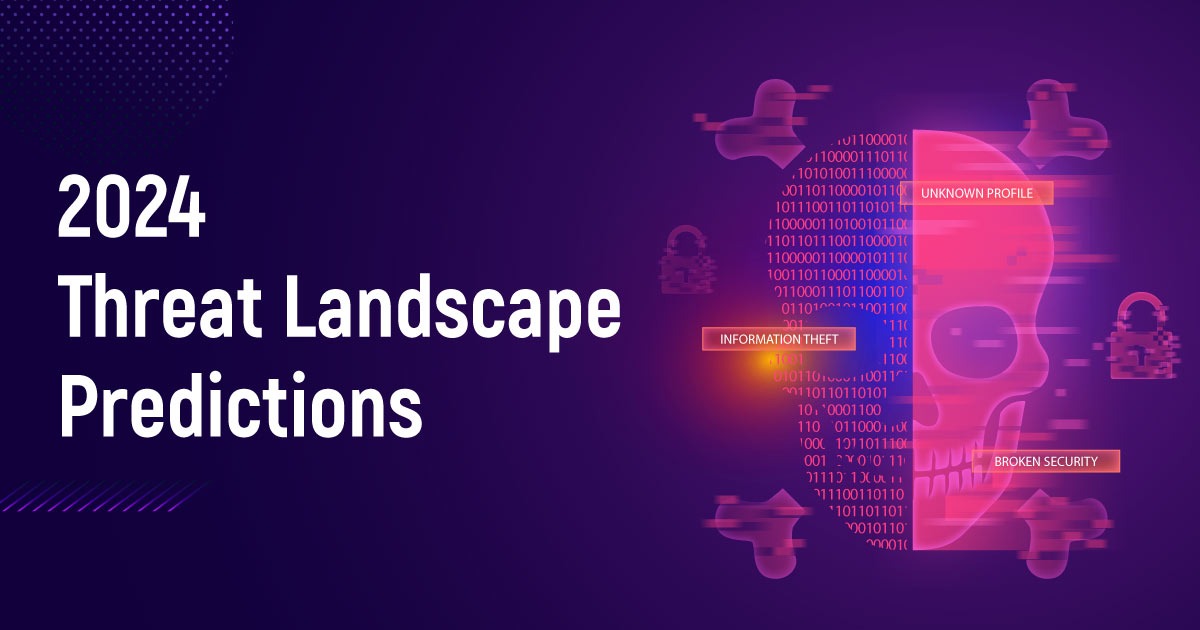As we embark on the horizon of 2024, the cybersecurity landscape is teeming with challenges and opportunities. Recently, a globally recognized Los Angeles-based cybersecurity company has meticulously curated a comprehensive forecast, delving into imminent threats and novel security challenges poised to reshape the digital realm. This insightful analysis draws from a profound exploration of the Dark Web’s underground economy and a meticulous examination of impactful incidents targeting Fortune 100 entities, governments, and critical infrastructure.
Escalating Ransomware Threats in Corporate Arenas:
-
$8.5 billion: Estimated global cost of ransomware attacks in 2023.
-
30%: Projected increase in ransomware attacks targeting public companies in 2024.
Public Companies in the Crosshairs:
Ransomware groups are set to sharpen their focus on publicly traded organizations, spurred by recent SEC regulations. The regulatory landscape is becoming a double-edged sword as incidents of network intrusions and data breaches escalate. Malicious actors are leveraging these regulations for manipulation and extortion, presenting victims with GDPR compliance violations and regulatory fines as bargaining tools.
Financial and Legal Dilemmas:
The impending surge in ransomware activities puts organizations in high-technology fields, financial institutions, and critical infrastructure at risk. The dilemma between acquiescing to ransom demands and navigating the formal incident disclosure process amplifies the potential damage to investor relations, partnerships, and customer loyalty.
Critical Infrastructure Under Siege:
-
43%: Increase in cyber-attacks on critical infrastructure reported in the last year.
-
$10 million: Average cost of recovery for critical infrastructure organizations after a cyber-attack.
Targeting Energy and Nuclear Sectors:
Critical infrastructure remains a focal point for cyber-attacks, with recent incidents exemplifying the intersection of cyberterrorism and cybercrime. Iranian-backed cybercriminal groups targeting a water utility in Pennsylvania underscore the geopolitical ramifications of such attacks.
Geopolitical Influence Through Data Exploitation:
The nuclear sector emerges as a prime target for geopolitical interests, with nefarious actors deploying data and accessing critical infrastructure. The acts, likely orchestrated by foreign entities, mirror wartime tactics of capturing innocent hostages, intending to wield data as a tool for geopolitical influence and domination.
Weaponization of Artificial Intelligence (AI):
-
$200 billion: Estimated global spending on AI in defense by 2024.
-
25%: Projected increase in AI-driven cyber-attacks in the coming year.
Surge in AI Weaponization:
Malicious actors are poised to cultivate weaponized AI across cyber domains, scaling and optimizing operations. On a geopolitical stage, integrating AI into military applications triggers a technological supremacy race, prompting nations to invest heavily in AI research and development.
Ethical and Strategic Implications:
The weaponization of AI introduces a new era of military capabilities, raising ethical questions about accountability and reshaping the nature of warfare. In the realm of cyber and information warfare, AI-driven systems, including automated bots, AI-driven malware, and deepfakes, contribute to a landscape where truth and manipulation blur.
Smart Cities and AI-Powered Threats:

-
$1.2 trillion: Projected global investment in smart city technologies by 2023.
-
68%: Anticipated increase in AI-powered cyber threats against smart cities in 2024.
Evolving Threats in Smart Cities:
As smart cities integrate AI technologies for improved urban operations, the threat landscape evolves. Advanced phishing and malware that can evade detection pose significant concerns, especially with the growing reliance on mobile technology within city infrastructures.
Proactive Cybersecurity Strategies:
Smart cities must adopt proactive cybersecurity strategies, seamlessly integrating technological solutions, establishing clear policies, and forming dedicated security teams. This holistic approach ensures resilience against advanced threats and potential vulnerabilities in software supply chains.
Digital Identity in the Crosshairs:
-
$6.4 billion: Estimated cost of global losses due to digital identity attacks in 2023.
-
35%: Projected increase in biometric authentication usage by organizations in 2024.
Proliferation of Digital Identity Attacks:
Attacks against digital identity are expected to proliferate, leading to large-scale data breaches. The absence of robust identity protection programs poses substantial economic losses for businesses and privacy risks for consumers.
Biometrics and Blockchain as Defenders:
The shift towards biometric authentication and Multi-Factor Authentication (MFA) addresses the escalating sophistication of cyber threats. Blockchain technology emerges as a game-changer, providing a secure foundation for storing digital identities and granting users greater control.
Regulatory Landscape and Quantum Computing:
Stringent privacy regulations, such as GDPR and CCPA, shape the future of digital identity protection. The advent of quantum computing introduces both opportunities and challenges, necessitating a balance between leveraging AI for defense and anticipating adversarial AI attacks.
Navigating the Cyber Future
This comprehensive cybersecurity forecast for 2024 sheds light on the evolving threat landscape, urging organizations and policymakers to stay vigilant and adapt swiftly. The escalating ransomware threats, critical infrastructure vulnerabilities, AI weaponization surge, challenges in smart cities, and digital identity attacks necessitate a collective effort to navigate the complexities of the cyber threat landscape. As the digital era unfolds, collaboration, innovation, and adherence to ethical and legal considerations are paramount for a secure digital future.












